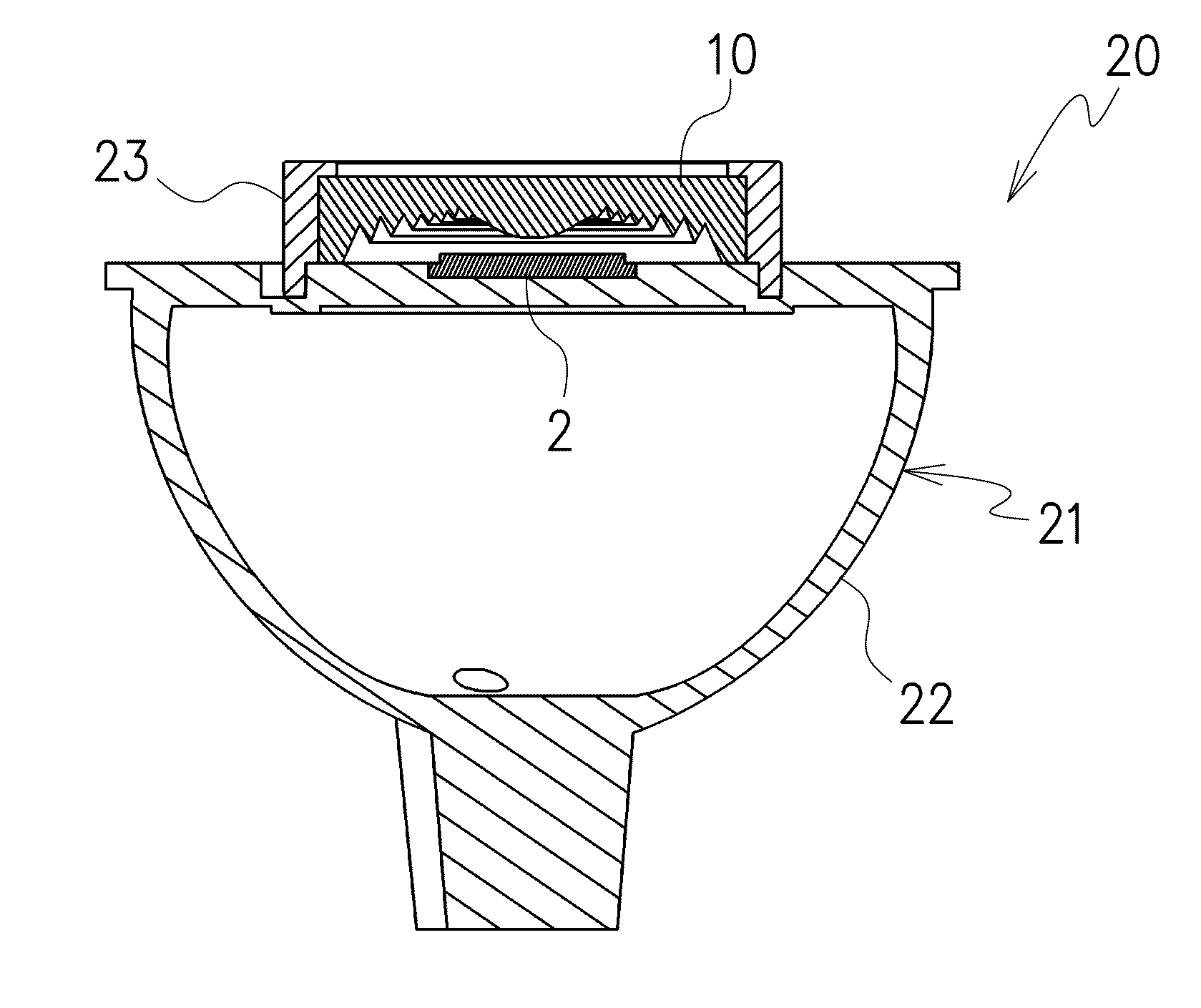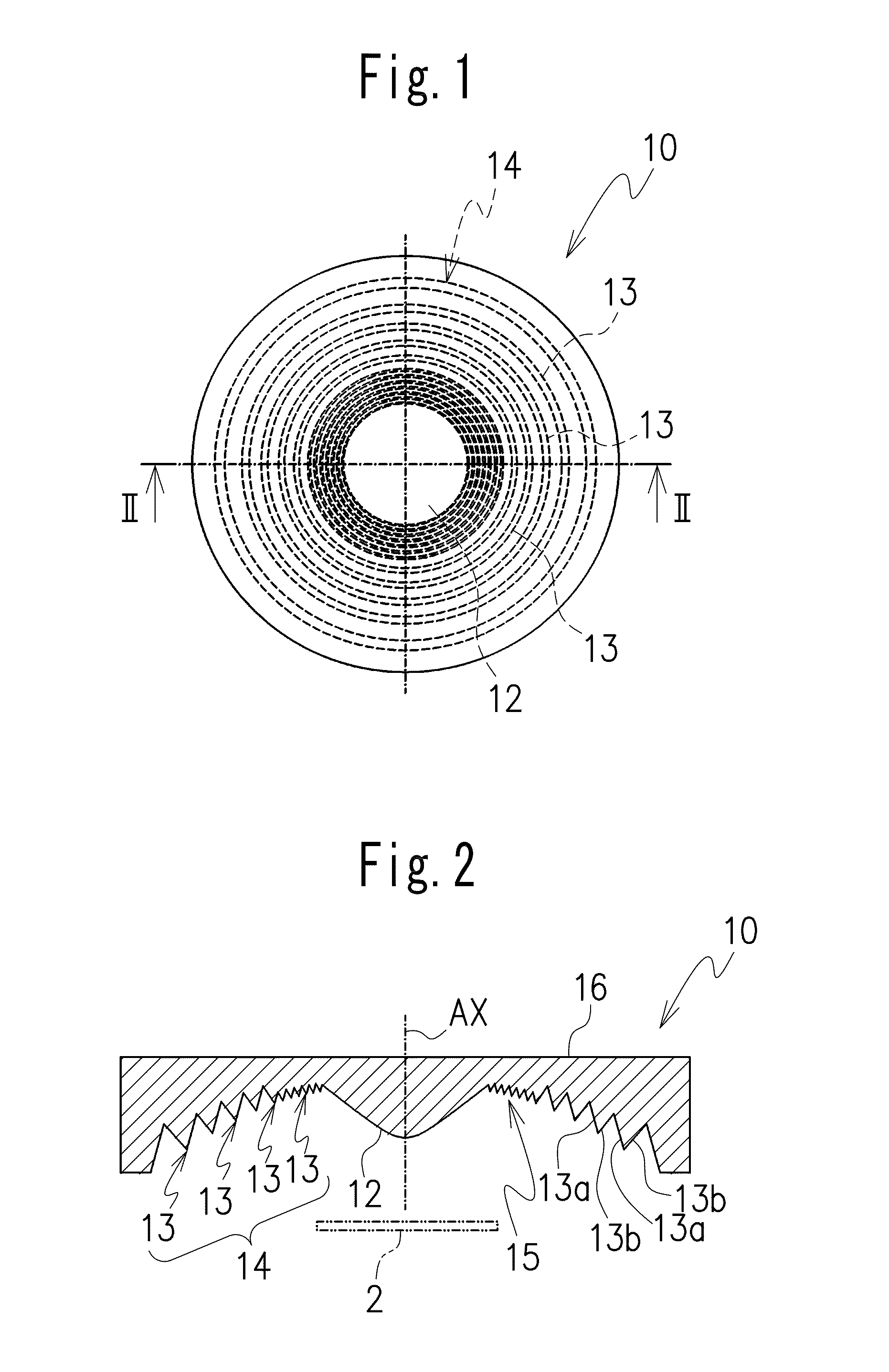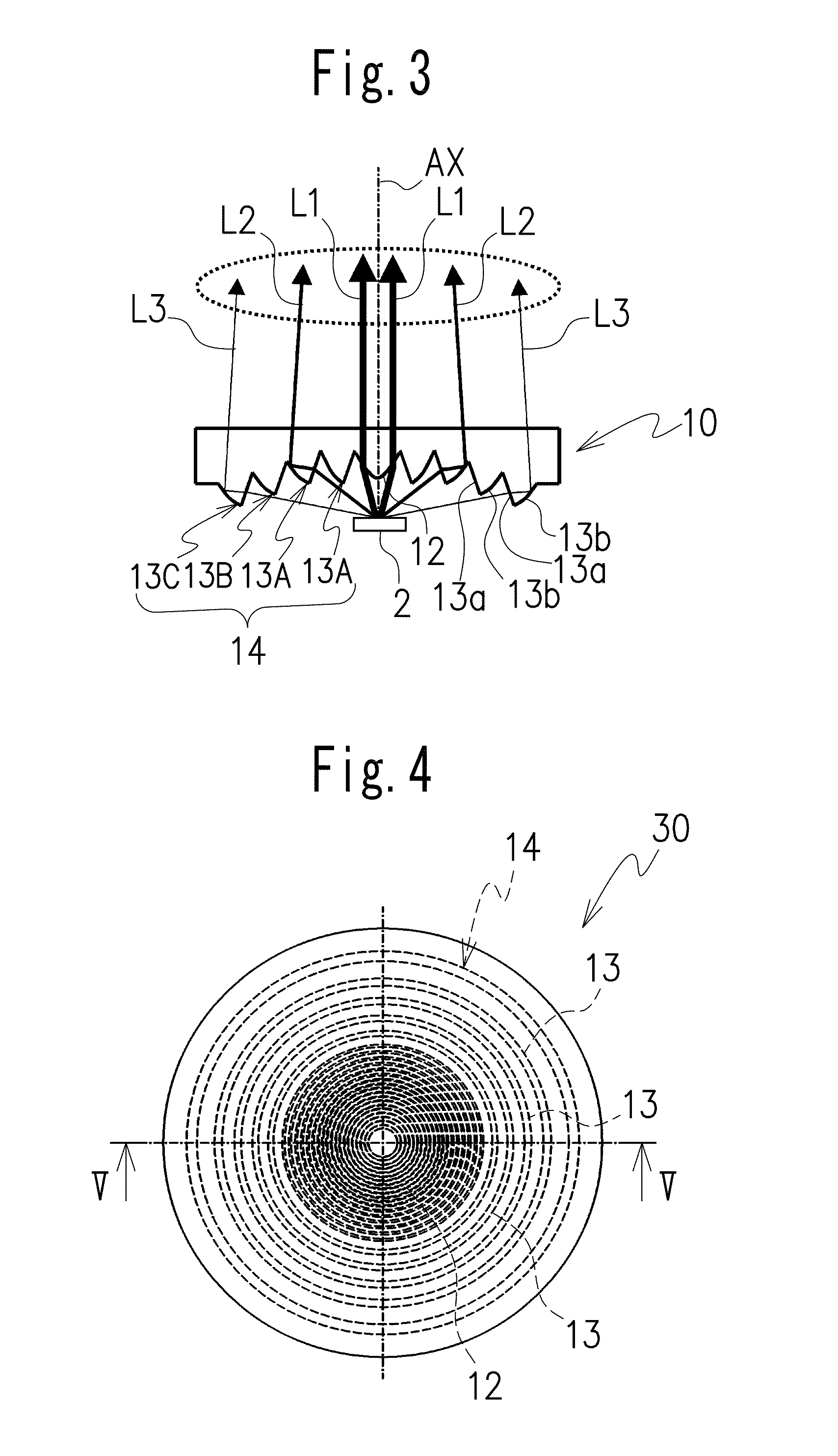Lens member and optical unit using said lens member
a technology of lens member and optical unit, which is applied in the direction of instruments, lighting and heating apparatus, semiconductor devices for light sources, etc., can solve the problems of loss of light passing through this portion, difficult to maximize the light utilization efficiency, and loss of light generated by this portion, etc., to achieve excellent appearance and high light utilization efficiency. effect of light emitted from the light sour
- Summary
- Abstract
- Description
- Claims
- Application Information
AI Technical Summary
Benefits of technology
Problems solved by technology
Method used
Image
Examples
first embodiment
[0061]FIGS. 1-3 show a lens member 10 in accordance with the present invention. Note that the scale in the various drawings used for the following description is suitably altered to render the various members of a discernible size.
[0062]A plate-shaped lens member 10 has a plurality of concentric annular prisms each including an inner annular surface divided from a light-entrance surface 3 of a conventional TIR lens 1 shown in FIG. 29 and an outer annular surface divided from a light-reflection surface 4 of the conventional TIR lens 1 in which the light-entrance surface 3 has a concave shape provided in a lower portion of the conventional TIR lens 1 and the light-reflection surface has a convex shape positioned at a peripheral side of the conventional TIR lens 1 to surround the light-entrance surface. The light-entrance surface being disposed to face a light source 2 that uses an LED with a central axis of the light-entrance surface and a central axis of the light source corresponded...
second embodiment
[0090]Next, chromaticity of illuminating light after being passed through the plate-shaped lens member 30 of the second embodiment is investigated. Results are shown in FIG. 12. In addition, for comparison, color variability is similarly investigated also for a comparison-purpose lens member 100 having a convex lens portion 101 integrally formed in a central portion of the light-entrance surface, as shown in FIG. 13. Results are shown in FIG. 14. Note that the color variability images shown in FIGS. 12 and 14 are color images converted to grayscale black-and-white images.
[0091]On comparison, it is found that, whereas in the lens member 100 used for purposes of comparison there is color variability with locally occurring yellowish regions and bluish regions, in the lens member 30 of the second embodiment color variability is reduced overall with few yellowish or bluish regions.
[0092]Note that the even if light source 2, which may have a plurality of blue LED elements arranged therein...
third embodiment
[0095]As shown in FIG. 16, the irregularities in this third embodiment are a plurality of elliptically-shaped convex portions 41 arranged on the light-exit surface 16, the convex portions having diffusion capability for diffusing emitted light. Note that the convex portions 41 preferably have a non-spherical surface in order to efficiently refract light. Moreover, the convex portions may also have a quadrangular pyramid shape, for example.
[0096]In FIG. 17, color variability of the lens member 40 in accordance with the third embodiment is investigated. This image shows color variability to be further reduced compared to the lens member 30 of the second embodiment.
[0097]Having the convex portions 41 for controlling at least one of diffusion capability and directivity of the emitted light formed on the light-exit surface 16 opposite to the Fresnel lens surface 14 in the lens member 40 of the third embodiment in this way makes it easy to emit light focused as much as possible by the Fre...
PUM
 Login to View More
Login to View More Abstract
Description
Claims
Application Information
 Login to View More
Login to View More - R&D
- Intellectual Property
- Life Sciences
- Materials
- Tech Scout
- Unparalleled Data Quality
- Higher Quality Content
- 60% Fewer Hallucinations
Browse by: Latest US Patents, China's latest patents, Technical Efficacy Thesaurus, Application Domain, Technology Topic, Popular Technical Reports.
© 2025 PatSnap. All rights reserved.Legal|Privacy policy|Modern Slavery Act Transparency Statement|Sitemap|About US| Contact US: help@patsnap.com



